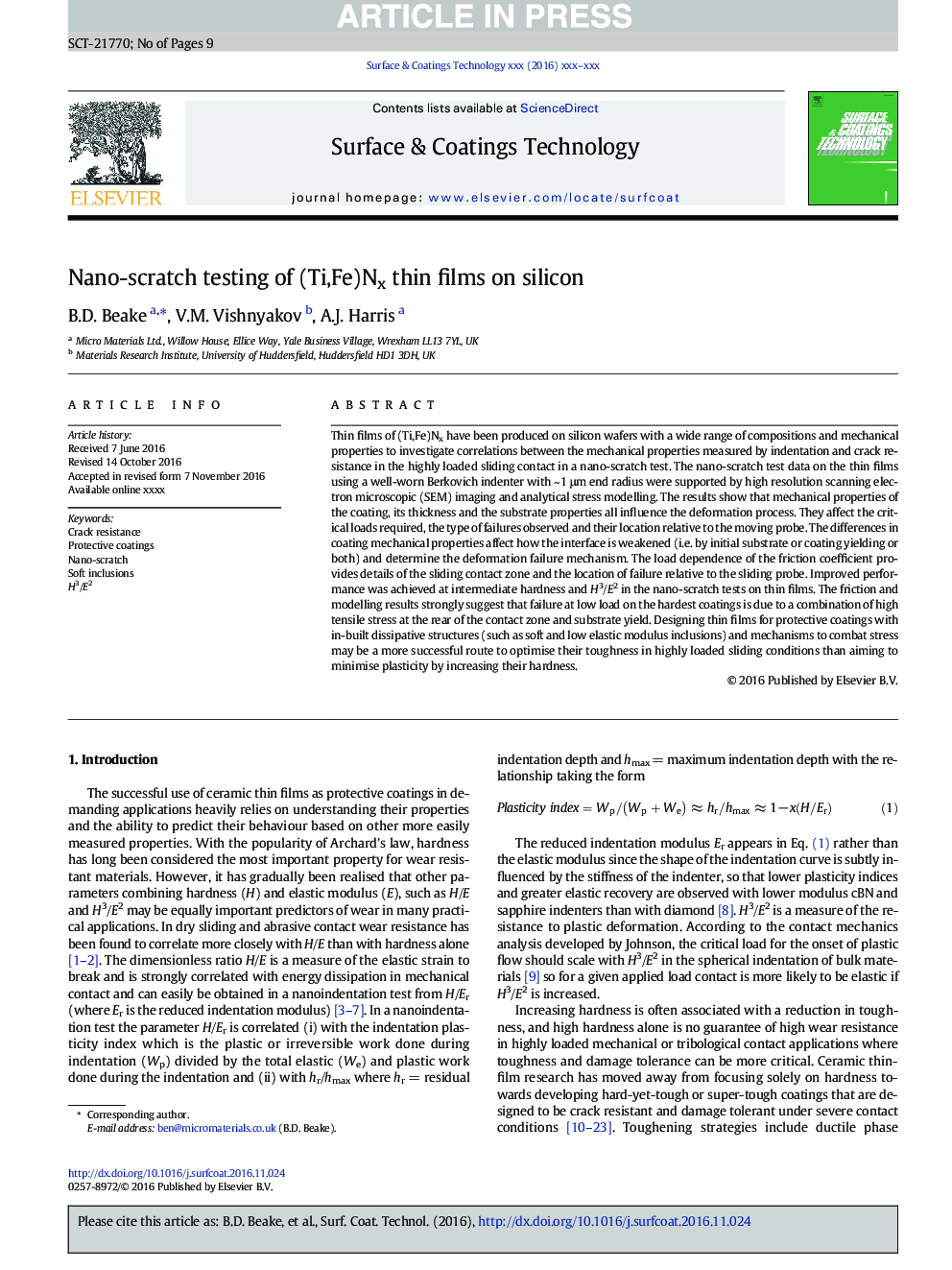| Article ID | Journal | Published Year | Pages | File Type |
|---|---|---|---|---|
| 5465306 | Surface and Coatings Technology | 2017 | 9 Pages |
Abstract
Thin films of (Ti,Fe)Nx have been produced on silicon wafers with a wide range of compositions and mechanical properties to investigate correlations between the mechanical properties measured by indentation and crack resistance in the highly loaded sliding contact in a nano-scratch test. The nano-scratch test data on the thin films using a well-worn Berkovich indenter with ~ 1 μm end radius were supported by high resolution scanning electron microscopic (SEM) imaging and analytical stress modelling. The results show that mechanical properties of the coating, its thickness and the substrate properties all influence the deformation process. They affect the critical loads required, the type of failures observed and their location relative to the moving probe. The differences in coating mechanical properties affect how the interface is weakened (i.e. by initial substrate or coating yielding or both) and determine the deformation failure mechanism. The load dependence of the friction coefficient provides details of the sliding contact zone and the location of failure relative to the sliding probe. Improved performance was achieved at intermediate hardness and H3/E2 in the nano-scratch tests on thin films. The friction and modelling results strongly suggest that failure at low load on the hardest coatings is due to a combination of high tensile stress at the rear of the contact zone and substrate yield. Designing thin films for protective coatings with in-built dissipative structures (such as soft and low elastic modulus inclusions) and mechanisms to combat stress may be a more successful route to optimise their toughness in highly loaded sliding conditions than aiming to minimise plasticity by increasing their hardness.
Related Topics
Physical Sciences and Engineering
Materials Science
Nanotechnology
Authors
B.D. Beake, V.M. Vishnyakov, A.J. Harris,
